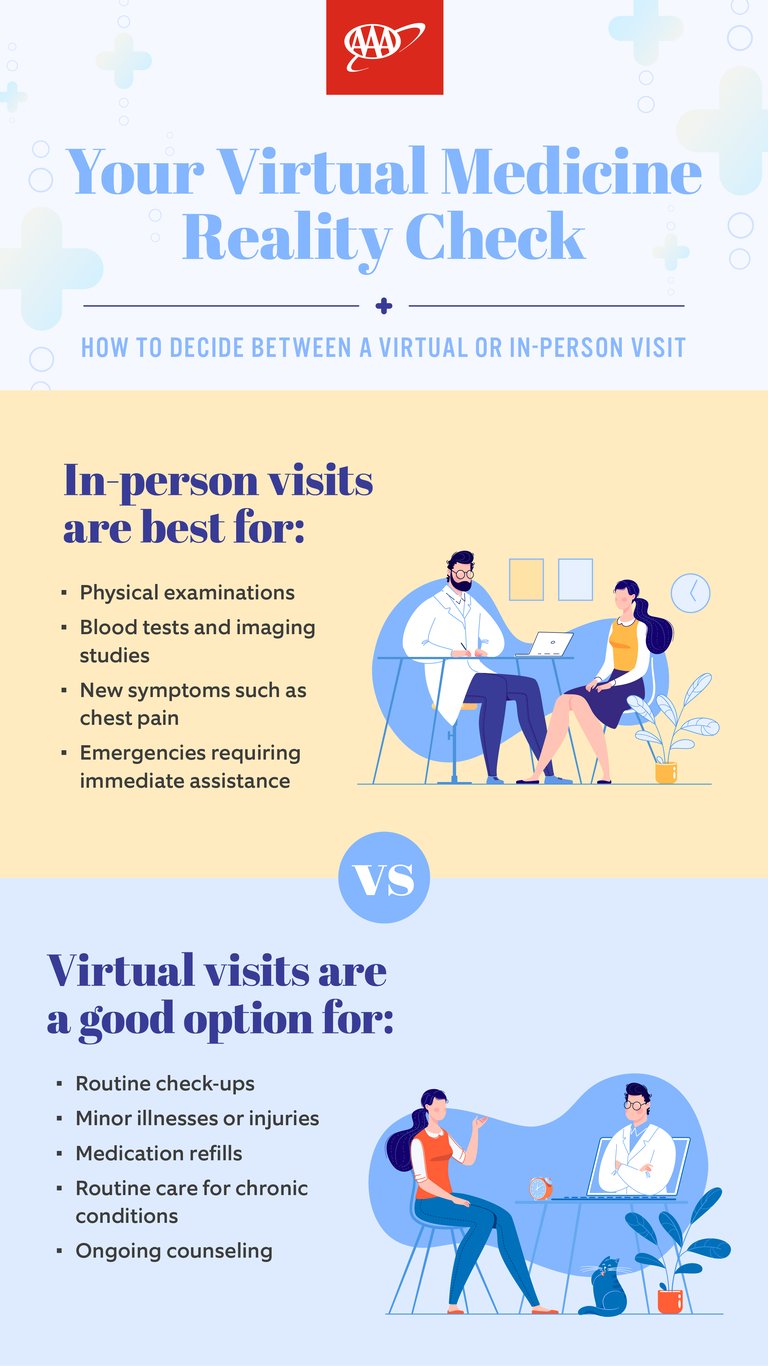Are Virtual Doctors' Appointments as Good as in-person Visits?
The pros and cons of telemedicine, plus what to expect and how to prepare


Telehealth, or virtual doctors’ appointments, are a way for health care providers to deliver clinical care remotely through either a computer or mobile device. Gone are the days when the only option for receiving health care was going to an actual doctor’s office. In fact, in 2021, 37% of adults used telemedicine in the prior 12 months.
While telehealth use drastically increased during the pandemic, research suggests it will continue to be a popular choice among patients. That said, there are both advantages and disadvantages to virtual appointments. Read on to learn more.

What is a virtual doctors’ appointment?
A virtual doctors’ appointment, or telehealth appointment, is when you receive health care services through a virtual visit with your provider using a computer or mobile device. Providers may use live video, audio, or instant messaging to remotely address your concerns and diagnose your condition.
Virtual care typically offers more availability and flexibility when scheduling, especially since you don’t need to factor in commute or extra wait times. A telehealth appointment is most effective for:
- Minor injuries or flu-like symptoms (like fever, cough, sore throat, or congestion), gastrointestinal issues, and similar conditions.
- Therapy and counseling.
- Nutrition counseling.
- Check-ups.
- Chronic illness maintenance.
- Prescription refills.
- Post-surgical follow-up.

Pros and cons of virtual doctors’ appointments
Pros
- Convenient and more flexible.
- Affordable.
- Lack of commute and wait time.
- Can be conducted anywhere there’s an internet connection.
- Can be used for a variety of appointment types.
Cons
- Technical aspects and difficulties.
- Less formal setting.
- Not suitable for some types of care, including emergencies.
- Can be an obstacle for creating or maintaining a genuine doctor-patient relationship.
- Not all plans cover telemedicine.

What to expect when scheduling a virtual visit
When preparing for your virtual visit:
- Check your email for instructions. You may be sent an email, text, or other communication from your doctor’s office with information about your appointment, how to log on, how to check in, or other details. Read these instructions carefully.
- Test your technology. You may be sent a link or prompted to test your device and address any challenges, such as the microphone or camera not working. Make sure you do this before your visit.
- Find a well-lit, quiet, private location. Make sure there’s good lighting and that your device is on a flat, stable surface. Make sure there are no distractions or sounds around you, and that other applications on your device are closed. And, since you’ll be discussing your health, make sure you’re in a location where you feel comfortable being open and honest.
- Be prepared. Know your current medications, temperature, weight, etc., as well as any symptoms, questions, and concerns you may have.
During your visit:
- Stay focused. Avoid eating or drinking, completing other tasks, checking email, etc. Give your full attention to your provider.
- Be patient. Sometimes the provider may be running a few minutes behind schedule. And, in many cases, technology doesn’t work the way we want it to. Also, keep in mind that your provider may have to ask additional questions since they aren’t seeing you in person.
- Take your time. This is your time with your provider, and you shouldn’t be made to feel rushed or unheard. Ask questions and be sure you understand any next steps your provider has recommended.

Which is better—an in-person visit or virtual appointment?
In-person visits are better if it's your first time seeing a new doctor or if you need an exam that requires a hands-on approach, like completing a screening, getting a vaccination, feeling for a lump, listening to your heart or lungs, etc. Many patients prefer visits to a provider's office because they want to create a more genuine, in-person relationship with their doctor. In-person care is also typically better for young children.
That said, in-person care can require more time and can be challenging to fit into your schedule. You’ll have to factor in commuting and parking, as well as time spent in the waiting room or exam room. You’re also increasing your exposure to other individuals in the provider's office who might be ill.
A virtual visit may be a more convenient way to see your provider for general check-ups or minor health issues. You’ll likely have a positive experience as long as you prepare for your visit, are honest with your provider, and ask any questions you have.
Ultimately it comes down to what you need from your provider and what makes you feel the most comfortable. Keep in mind, some doctors may require an in-person visit for certain reasons, or as a prerequisite to conducting telehealth visits. You should also make sure virtual care is covered by your health insurance provider.
